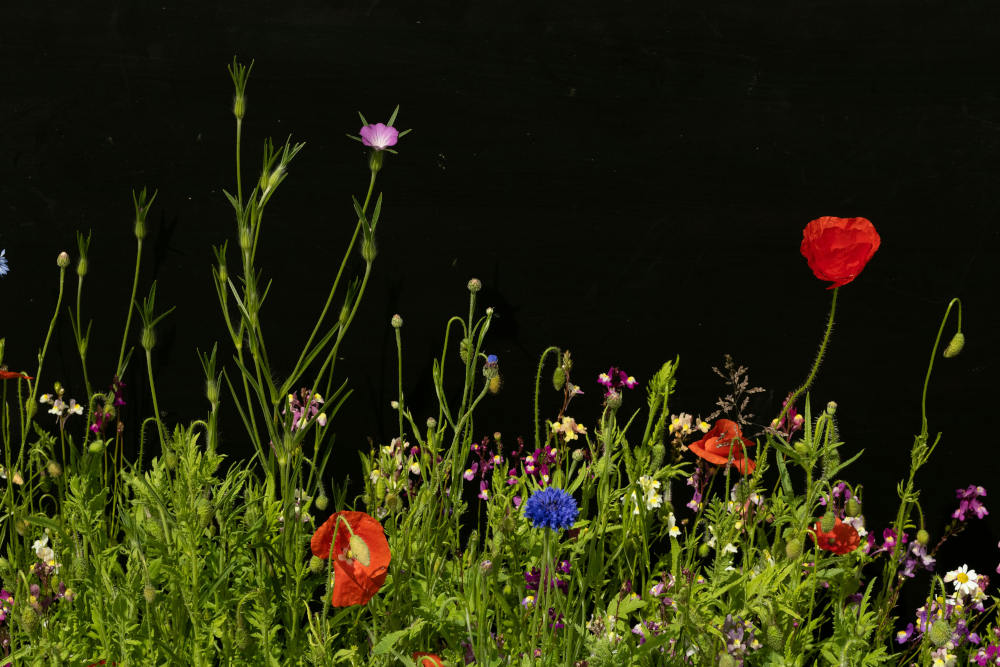
Wildkräuter sind nicht nur ein Heilmittel, sondern auch eine Quelle für kulinarische Aromen und oft frischer und intensiver als die im Supermarkt. Das Sammeln von Wildkräutern verleiht der täglichen Küche Tiefe, Aroma und Komplexität und verbindet Sie mit den Rhythmen der Natur.
Egal, ob Sie Ihre Küche mit einzigartigen, erdigen Aromen aufwerten oder einfach die Landschaft Ihrer Umgebung geschmacklich erkunden möchten, dieser Leitfaden stellt die besten Wildkräuter zum Kochen vor, erklärt, wie man sie erkennt, welche kulinarischen Verwendungsmöglichkeiten sie haben und wie man sie nachhaltig erntet.
Wichtig: Wildkräuter vor dem Verzehr immer anhand von mindestens zwei Quellen eindeutig identifizieren. Vermeiden Sie belastete Gebiete und schützen Sie gefährdete Pflanzen durch verantwortungsvolles Ernten.
Panaprium ist unabhängig und wird vom Leser unterstützt. Wenn Sie über unseren Link etwas kaufen, erhalten wir möglicherweise eine Provision. Wenn Sie können, unterstützen Sie uns bitte monatlich. Die Einrichtung dauert weniger als eine Minute und Sie werden jeden Monat einen großen Beitrag leisten. Danke schön!
1. Bärlauch (Allium ursinum / Allium vineale)
Geschmack: Knoblauchig, leicht süß
Verwendung: Pesto, Salate, Suppen, Butter, Ölaufguss
Fundort: Feuchte Wälder, schattige Felder, in der Nähe von Bächen (Frühling bis Frühsommer)
Erntetipps: Sammeln Sie junge Blätter vor der Blüte. Sie können auch Blütenknospen und Zwiebeln ernten, vermeiden Sie jedoch eine Überernte der Wurzeln.
Achtung: Keine Verwechslung mit giftigen Maiglöckchen oder Narzissen.
2. Wilde Zwiebel (Allium canadense / Allium schoenoprasum)
Geschmack: Mild nach Zwiebel, ähnlich wie Schnittlauch
Verwendung: Salate, Eierspeisen, Pfannengerichte, Suppen
Wo zu finden: Rasenflächen, Felder, Wiesen, offene Wälder
Erntetipps: Schneiden Sie die grünen Spitzen wie bei Schnittlauch ab. Zwiebeln können wie kleine Zwiebeln verwendet werden, ernten Sie jedoch sparsam.
3. Brennnessel (Urtica dioica)
Geschmack: Erdig, ähnlich wie Spinat mit einer nussigen Unternote
Verwendung: Suppen, Tees, Pesto, Sautés, Nudelteig
Fundort: Feuchte, nährstoffreiche Böden – Waldränder, Flussufer (im Frühjahr)
Erntetipps: Handschuhe tragen! Ernten Sie die zarten oberen Blätter vor der Blüte. Blanchieren oder kochen Sie die Blätter, um den Stachel zu entfernen.
Nährwerthinweis: Reich an Eisen, Kalzium und Vitamin A und C.
4. Wilde Minze (Mentha spp.)
Geschmack: Erfrischend, kühlend, süß
Verwendung: Tees, Desserts, Saucen, Cocktails, Lammgerichte
Wo zu finden: Bachufer, Feuchtgebiete, feuchte Wiesen
Erntetipps: Pflücken Sie die Blätter vor der Blüte, um das beste Aroma zu erhalten. Probieren Sie zum Kochen Grüne Minze oder Wasserminze.
5. Waldsauerklee (Oxalis spp.)
Geschmack: Würzig, zitronig, hell
Verwendung: Salate, Saucen, Garnituren, Limonadenersatz
Wo zu finden: Rasenflächen, schattige Wälder, Gartenränder
Erntetipps: Pflücken Sie frische Blätter, Blüten oder Samenkapseln. Aufgrund des Oxalsäuregehalts nur in kleinen Mengen verwenden.
6. Vogelmiere (Stellaria media)
Geschmack: Mild, leicht grasig und süß
Verwendung: Salate, Suppen, Pestos, Smoothies
Wo zu finden: Gärten, Rasenflächen, aufgewühlter Boden im Frühling und Herbst
Erntetipps: Ernten Sie die Pflanzen, solange sie jung und zart sind, vor der Blüte. Roh oder gekocht verwenden.
7. Löwenzahn (Taraxacum officinale)
Geschmack: Bittergrün (Blätter), blumig (Blüten), nussig (Wurzeln)
Verwendung: Salate, Krapfen, Wein, sautiertes Gemüse, Kaffeeersatz (geröstete Wurzeln)
Wo zu finden: Überall – Rasenflächen, Felder, Gärten
Erntetipps: Junge Blätter im zeitigen Frühjahr sind weniger bitter. Blüten können paniert und frittiert werden. Wurzeln schmecken im Herbst am besten.
8. Wilder Fenchel (Foeniculum vulgare)
Geschmack: Lakritz, süß, aromatisch
Verwendung: Salate, Fischgerichte, Pickles, Gewürzmischungen
Wo zu finden: Straßenränder, Felder, mediterranes Klima
Erntetipps: Verwenden Sie die Wedel als Gewürz oder ernten Sie die Samen als Gewürz. Vermeiden Sie bittere, ältere Stängel.
Achtung: Verwechseln Sie Fenchel nicht mit dem Schierling. Achten Sie auf den starken Lakritzduft des Fenchels.
9. Weißer Gänsefuß (Chenopodium album)
Geschmack: Mild, nussig, nach Spinat
Verwendung: Gekochtes Gemüse, Smoothies, Omeletts, Quiches
Wo zu finden: Aufgewühlter Boden, Gärten, verlassene Grundstücke
Erntetipps: Pflücken Sie junge Blätter vor der Blüte. Kochen oder dämpfen Sie sie für eine bessere Konsistenz und Verdaulichkeit.
Nährwertangaben: Sehr reich an Vitamin A, C und Kalzium.
10. Portulak (Portulaca oleracea)
Geschmack: Herb, zitronig, leicht salzig
Verwendung: Salate, Tacos, Eintöpfe, Pickles
Wo zu finden: Risse im Gehweg, Gärten, trockener Boden
Erntetipps: Pflücken Sie zarte Stängel und Blätter. Essen Sie sie roh oder gekocht.
Gesundheitsbonus: Eine der wenigen pflanzlichen Quellen mit hohem Gehalt an Omega-3-Fettsäuren.
11. Knoblauchsenf (Alliaria petiolata)
Geschmack: Knoblauchig, senfig, pfeffrig
Verwendung: Pesto, Soßen, Gewürzmischungen, gekochtes Gemüse
Wo zu finden: Waldränder, schattige Bereiche – sehr invasiv
Erntetipps: Vor der Blüte ernten. Wenn möglich, die gesamte Pflanze herausziehen – diese invasive Art verdrängt einheimische Pflanzen.
12. Wilde Bergamotte (Monarda fistulosa)
Geschmack: Würzig, minzig, oreganoartig
Verwendung: Tees, Marinaden, Braten, Kräuterbutter
Fundort: Wiesen, Waldlichtungen
Erntetipps: Verwenden Sie frische Blätter oder Blüten zum Kochen. Trocknen Sie sie für Teemischungen.
13. Veilchenblätter und -blüten (Viola spp.)
Geschmack: Süß, grasig, blumig
Verwendung: Salate, Sirupe, kandierte Blüten, Gelees
Wo zu finden: Rasenflächen, Waldränder
Erntetipps: Junge Blätter und Blüten im Frühjahr sammeln. Reich an Vitamin C.
14. Rotklee (Trifolium pratense)
Geschmack: Süß, grün, blumig
Verwendung: Salate, Tees, Backwaren, Garnierung
Wo zu finden: Felder, Wiesen, Weiden
Erntetipps: Blütenköpfe verwenden. Bei Schimmelbildung vermeiden. Für Tee trocknen oder in Honig ziehen lassen.
15. Sauerampfer (Rumex acetosa oder wilde Verwandte)
Geschmack: herb, zitronig
Verwendung: Saucen, Suppen, Salate, cremige Kräuterdressings
Wo zu finden: Wiesen, Grasfelder, gestörte Gebiete
Erntetipps: Junge Blätter schmecken am besten. Aufgrund der Oxalsäure sparsam verwenden.
16. Schafgarbe (Achillea millefolium)
Geschmack: Bitter, pfeffrig, erdig
Verwendung: Fleischmarinaden, Eintöpfe, aromatisierte Öle, Tees
Wo zu finden: Felder, Straßenränder, sonnige Lichtungen
Erntetipps: Verwenden Sie die Blätter sparsam für den Geschmack. Blüten werden in Bitterstoffen und Likören verwendet.
17. Wilder Thymian (Thymus serpyllum)
Geschmack: Kräftig, erdig, würzig
Verwendung: Geröstetes Gemüse, Fleisch, Brot, aromatisierte Öle
Wo zu finden: Felsige Böden, sonnige Hänge
Erntetipps: Ernten Sie die Spitzen während der Blütezeit. Trocknen Sie sie für den Wintergebrauch.
18. Kiefernnadeln (Pinus spp.)
Geschmack: Harzig, zitronig, frisch
Verwendung: Tees, Sirupe, Marinaden, aromatisierter Honig oder Essig
Wo zu finden: Kiefernwälder, Wanderwege, Hügel
Erntetipps: Verwenden Sie junge grüne Nadeln. Vermeiden Sie Eiben und andere giftige immergrüne Pflanzen.
Ernährung: Reich an Vitamin C.
19. Wilder Beifuß (Artemisia spp.)
Geschmack: Bitter, salbeiartig
Verwendung: Räuchern von Fleisch, Würzen von Eintöpfen, Tees
Fundort: Trockenes, offenes Land, Westen der USA
Erntetipps: Junge Blätter sparsam verwenden – starker Geschmack! Getrocknet oft besser.
Vorsicht: Aufgrund potenter Verbindungen wie Thujon nur mäßig verwenden.
20. Klettenlabkraut (Galium aparine)
Geschmack: Mild, grün, leicht bitter
Verwendung: Frühlingstonika, Suppen, grüne Smoothies
Wo zu finden: Hecken, Waldränder, schattige Felder
Erntetipps: Verwenden Sie im Frühjahr zarte Jungpflanzen. Kann entsaftet oder gekocht werden.
Tipps zur nachhaltigen Nahrungssuche
-
Sichere Identifizierung: Falsche Pflanzenidentifizierung kann gefährlich sein. Nutzen Sie Ratgeber, Apps wie Seek oder PlantSnap und Kurse vor Ort.
-
Verantwortungsvoll ernten:
-
Nehmen Sie nicht mehr als 10 % eines Standes ein.
-
Reißen Sie die Pflanzen nur aus, wenn es unbedingt notwendig ist.
-
Lassen Sie genug für die Fortpflanzung von Wildtieren und Pflanzen übrig.
-
-
Vermeiden Sie verschmutzte Bereiche: Halten Sie sich von Straßenrändern, Hundeparks, mit Pestiziden behandelten Rasenflächen und Industriegebieten fern.
-
Kennen Sie die Gesetze: Das Sammeln von Wildkräutern ist vielerorts legal, kann aber in öffentlichen Parks oder Naturschutzgebieten eingeschränkt sein. Fragen Sie auf Privatgrundstücken immer um Erlaubnis.
-
Verwenden Sie saubere Werkzeuge und Behälter: Bringen Sie Scheren, Futterkörbe oder Stoffbeutel mit, um empfindliche Kräuter nicht zu beschädigen.
Fazit: Kochen mit der Wildnis
Kochen mit Wildkräutern ist eine lohnende Möglichkeit, sich wieder mit der Umwelt zu verbinden. Jedes Wildkraut bringt mehr als nur Geschmack mit sich – es erzählt eine Geschichte, einen Ort und eine Jahreszeit. Indem Sie lernen, diese Pflanzen verantwortungsvoll zu erkennen, zu ernten und zuzubereiten, veredeln Sie nicht nur Ihre Mahlzeiten, sondern entwickeln auch eine tiefere Beziehung zur Natur.
Vom würzigen Sauerklee im Salat bis zur erdigen Tiefe der Brennnesseln in der Suppe können Wildkräuter alltägliche Gerichte in kulinarische Erlebnisse verwandeln, die von der Weisheit der Natur durchdrungen sind.
Empfohlene Ressourcen
-
Bücher:
-
Das Festmahl des Sammlers von Leda Meredith
-
Wild Food von Roger Phillips
-
Die neue Wildcrafted Cuisine von Pascal Baudar
-
Eating on the Wild Side von Jo Robinson
-
-
Apps:
-
Seek von iNaturalist
-
PictureThis
-
PlantNet
-
-
Gemeinschaften:
-
Lokale Mykologie- oder Sammelvereine
-
Permakultur-Treffen
-
Botanische Gärten oder Kräuterschulen
-
War dieser Artikel hilfreich für Sie? Bitte teilen Sie uns in den Kommentaren unten mit, was Ihnen gefallen oder nicht gefallen hat.
About the Author: Alex Assoune
Wogegen Wir Kämpfen
Weltweit-Konzerne produzieren in den ärmsten Ländern im Übermaß billige Produkte.
Fabriken mit Sweatshop-ähnlichen Bedingungen, die die Arbeiter unterbezahlt.
Medienkonglomerate, die unethische, nicht nachhaltige Produkte bewerben.
Schlechte Akteure fördern durch unbewusstes Verhalten den übermäßigen Konsum.
- - - -
Zum Glück haben wir unsere Unterstützer, darunter auch Sie.
Panaprium wird von Lesern wie Ihnen finanziert, die sich unserer Mission anschließen möchten, die Welt völlig umweltfreundlich zu gestalten.
Wenn Sie können, unterstützen Sie uns bitte monatlich. Die Einrichtung dauert weniger als eine Minute und Sie werden jeden Monat einen großen Beitrag leisten. Danke schön.































0 Kommentare